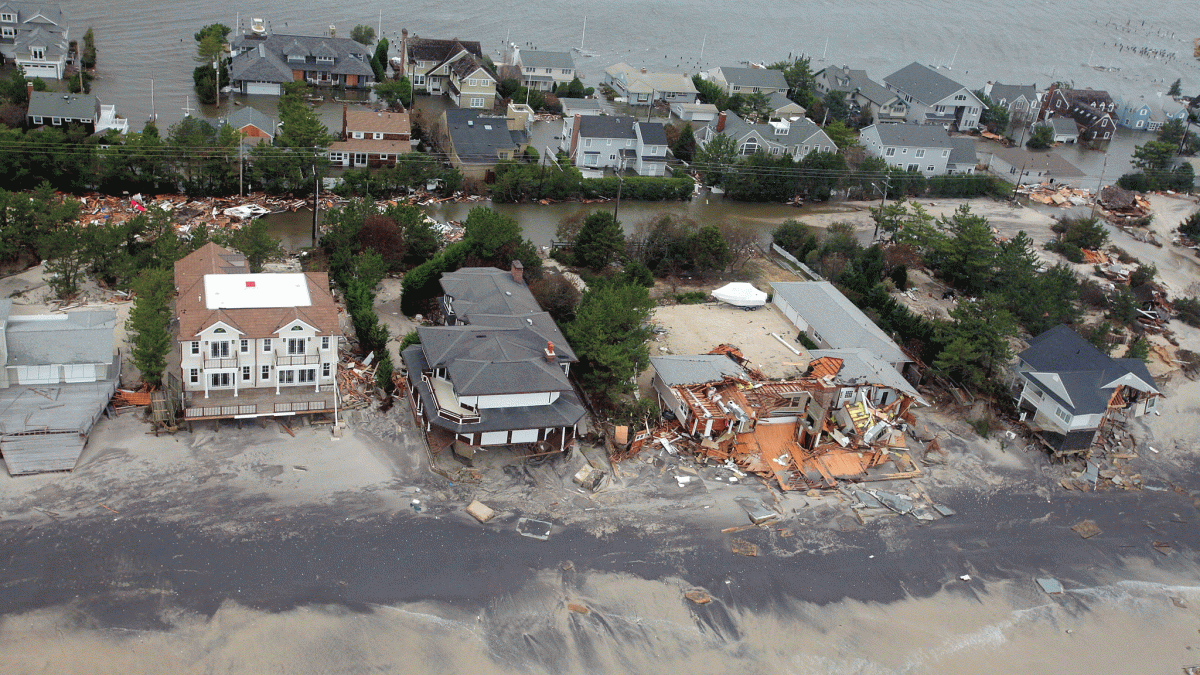Humans may be the dominant cause of global temperature rise, but they also could be a crucial factor in helping to reduce it, according to a new study that for the first time builds a novel model to measure the effects of human reactive behavior on climate.
Drawing from both social psychology and climate science, the new model investigates how human behavioral changes might evolve in response to extreme climate events and affect global temperature change. Combining climate projections and social processes, the new model predicts global temperature change ranging from 3.4 to 6.2°C by 2100, compared to 4.9°C from the climate model alone.
The results, published today in “Linking models of human behavior and climate alters projected climate change” in the journal Nature Climate Change, demonstrate the importance of factoring human behavior into models of climate change. The research team that conducted the study includes a professor from Arizona State University.
“A better understanding of the human perception of risk from climate change and the behavioral responses are key to curbing future climate change,” said lead author Brian Beckage, a professor of plant biology and computer science at the University of Vermont, Burlington.
“Most models of projected climate change do not take into account human behaviors, and when you do, climate futures can look very different,” added Ann Kinzig, an ASU professor in the School of Life Sciences. “Current models assume human behavior remains constant over a century or more. But people will respond to climate change, and that will alter the possible future that we will experience.”
Kinzig, who is also a senior sustainability scientist and chief research strategist in ASU’s Julie Ann Wrigley Global Institute of Sustainability, specializes in how humans shape and influence their natural environments and what this means for human health and Earth’s ecosystems.
The new model accounts for the dynamic feedbacks that occur naturally in the Earth’s climate system — temperature projections determine the likelihood of extreme weather events, which in turn influence human behavior. Human behavioral changes, such as installing solar panels or investing in public transportation, alter greenhouse-gas emissions, which change the global temperature and thus the frequency of extreme events, leading to new behaviors, and the cycle continues.
Due to the complexity of physical processes, climate models have uncertainties in global temperature prediction. The new model found that temperature uncertainty associated with the social component was of a similar magnitude to that of the physical processes, which implies that a better understanding of the human social component is important but often overlooked.
The model found that long-term, less easily reversed behavioral changes, such as insulating homes or purchasing hybrid cars, had by far the most impact in mitigating greenhouse-gas emissions and thus reducing climate change, vs. more short-term adjustments, such as adjusting thermostats or driving fewer miles.
“It is easy to lose confidence in the capacity for societies to make sufficient changes to reduce future temperatures,” said Louis Gross, director of the National Institute for Mathematical and Biological Synthesis (NIMBios) at the University of Tennessee, Knoxville, and a co-author of the paper. “When we started this project, we simply wanted to address the question as to whether there was any rational basis for ‘hope’ — that is, a rational basis to expect that human behavioral changes can sufficiently impact climate to significantly reduce future global temperatures.
“Climate models can easily make assumptions about reductions in future greenhouse-gas emissions and project the implications, but they do this with no rational basis for human responses,” he added. “The key result from this paper is that there is indeed some rational basis for hope.”
In addition to Beckage, Kinzig and Gross, authors of the paper include Katherine Lacasse, Rhode Island College; Eric Carr, NIMBios; Sara Metcalf, State University of New York at Buffalo; Jonathan Winter, Dartmouth College; Peter Howe, Utah State University; Nina Fefferman, University of Tennessee; Travis Franck, Climate Interactive; Asim Zia, University of Vermont; and Forrest Hoffman, Oak Ridge National Laboratory.
Top photo: Aerial views of the damage caused by Hurricane Sandy to the New Jersey coast taken during a search-and-rescue mission by 1-150 Assault Helicopter Battalion, New Jersey Army National Guard, on Oct. 30, 2012. Photo by The National Guard (New Jersey National Guard) [CC BY 2.0 (http://creativecommons.org/licenses/by/2.0) or Public domain], via Wikimedia Commons
More Science and technology

ASU at the heart of the state's revitalized microelectronics industry
A stronger local economy, more reliable technology, and a future where our computers and devices do the impossible: that’s the transformation ASU is driving through its microelectronics research…

Breakthrough copper alloy achieves unprecedented high-temperature performance
A team of researchers from Arizona State University, the U.S. Army Research Laboratory, Lehigh University and Louisiana State University has developed a groundbreaking high-temperature copper alloy…

4 ASU researchers named senior members of the National Academy of Inventors
The National Academy of Inventors recently named four Arizona State University researchers as senior members to the prestigious organization.Professor Qiang Chen and associate professors Matthew…


